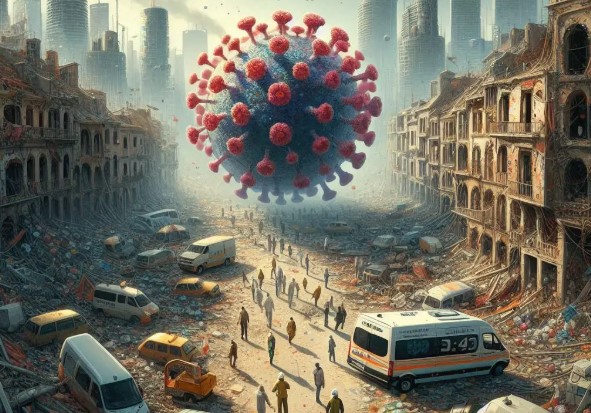The devastating DANA catastrophe, which ravaged the province of Valencia on October 29, 2024, claiming 228 lives, left behind not only destruction but also acute concerns about the spread of infections. Months of clean-up operations, vast quantities of mud and water, and the tireless efforts of volunteers – all created a potentially explosive mixture. Now, eight months later, initial alarming results from investigations conducted at the so-called Ground Zero of the catastrophe are emerging.
Shocking Discoveries: 30 Pathogens Found in Valencia’s Flood Zone
A study by the University of Valencia (UV), published in the renowned journal One Health, reveals disturbing details: In the first three weeks following the devastating floods in Valencia, approximately 30 infectious agents with human pathogenicity were found in water, mud, and soil samples from the affected cities. This was announced at a press conference by leading scientists, UV Professor of Parasitology and WHO expert Santiago Mas-Coma, UV Professor of Parasitology María Dolores Bargues, and Professor of Physiology Consuelo Borrás. The rector of the academic institution, Mavi Mestre, emphasized the urgency of the situation.
The researchers had not anticipated finding such a large number of pathogens. Mas-Coma highlighted that “many more” have been discovered since the initial investigation. All detected pathogens are pathogenic to humans, but vary in their mode of transmission and the symptoms they cause. The spectrum ranges from viruses and bacteria to parasitic protozoa, opportunistic free-living amoebae, and helminths. Additionally, vectors such as mosquitoes, sandflies, and freshwater mollusks, which can transmit various infectious diseases, were detected.
From Diarrhea to Fatal: The Range of Danger
The severity of the infections depends on each individual pathogen. Scientists warn: “Some can be fatal, while others do not go beyond causing diarrhea.” The specific strains, their combinations, and the resulting epidemiological situation are crucial.
Of particular note is the high rate of fecal contamination from human and animal sources, including sheep, goats, equids, dogs, and cats, which serve as potential reservoirs. The most commonly found pathogen in the first three weeks was the bacterium Escherichia coli (EPEC, ETEC, and EAEC), present in water and mud, which can cause diarrhea and vomiting in humans. This bacterium has also been identified after other flood disasters elsewhere.
Another alarming finding is Vibrio cholerae, the causative agent of cholera. Mas-Coma, however, reassured that the strains found appear to be “wild” and are usually “not very pathogenic to humans,” though he added that “the problem is that they can combine and later cause more pathogenicity.”
Mosquito Infestation and Long-Term Risks: What Awaits Valencia?
The high density of mosquito populations is also noteworthy. Despite cooler temperatures in October and November, over 3,500 mosquitoes were caught in just four traps during the first three weeks of sampling. The highest concentrations of infectious agents were found in the mud, not the water. Mas-Coma attributes this to the “very severe” droughts of previous years, which, with the arrival of the torrential floods, “erupted the surface layers of the soil and all organisms.”
The long-term study will last at least three years, as it has been shown that the greatest risk for the emergence of infectious outbreaks after water disasters often occurs only two or three years later. The goal is to develop a model that allows for a rapid response to future epidemics and improves diagnostics in hospitals and prevention protocols.
Particular Danger for the Elderly
The study places a special focus on the impact of the disaster on elderly people. Professor Borrás emphasized that aging reduces the body’s ability to adapt to various stresses, such as infectious agents. Older people respond less to these pathogens and have greater difficulty recovering. Furthermore, they can “suffer symptoms or atypical reactions to these pathogens,” which further increases their vulnerability.
The research, led by the UV’s Department of Health Parasitology, is a collaboration with several research groups and is supported by various national and European funding programs. The results underscore the urgent need to restore the sewage network to prevent further spread of pathogens.




